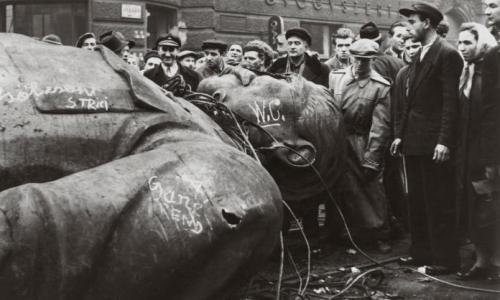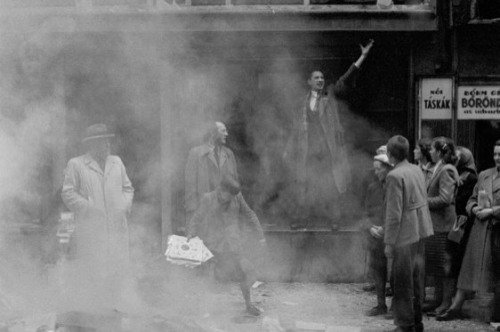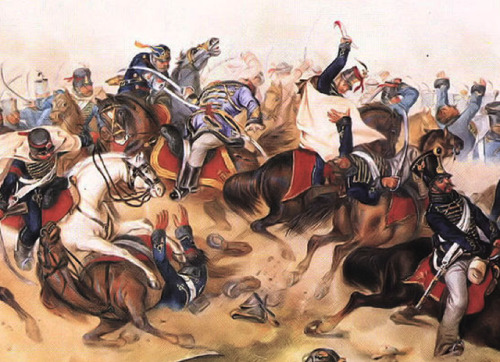#hungarian revolution
When the Hungarian revolution was only four days old, Peter Fryer arrived in Hegyeshalom, a small town on Hungary’s border with Austria. Fryer had been a writer for the British Communist Party’s Daily Worker for eight years; he had reported approvingly on the Hungarian regime’s show trials in the late 1940s. Now, in 1956, he was being sent to report on what his Communist Party described as a counterrevolutionary putsch aiming to overthrow a socialist government. Fryer wrote that on his arrival in Hungary, he thought he was setting foot in “a country where ‘we’ were in power. A country where a new life was being built, where the workers were in command”. He expected to see ordinary workers enthusiastically defending the government against a fascist insurrection. What he witnessed was the opposite.
A working class revolution was attempting to free the country from the shackles of national oppression which the Russian regime was imposing upon it. The revolutionary process was developing through the construction of workers’ councils, modelled on the soviets of the Russian revolution of 1917. “I saw for myself that the uprising was neither organised nor controlled by fascists or reactionaries”, he wrote in Hungarian Tragedy, the book he published while the revolution was being crushed by Russian tanks, and which became a classic account of a modern workers’ revolution. In Hungary, Fryer witnessed “a people’s revolution–a mass uprising against tyranny and poverty”.
READ MORE: Stalinism versus revolution: Hungary 1956
Post link
Erich Lessing’s photographs of the 1956 Hungarian revolution centre its participants and draw out their humanity. What he captured is real individuals participating in a mass, collective act of defiance.
You can read more about the Hungarian Revolution in the latest edition of the paper.
Post link
Corvin department store, Budapest, 1977. From the Budapest Municipal Photography Company archive.
Post link
March 15th 1848: Hungarian Revolution begins
On this day in 1848, a revolution broke out in Hungary, one of many in the ‘Year of Revolutions’. There had been a growing reform movement in Hungary which demanded change and provisions for those who had been most affected by the economic downturn after the Napoleonic Wars. Journalist Lajos Kossuth became leader of this movement, and pushed for democracy and civil equality in Hungary. As it stood, the Hungarian elites did not pay tax but only they had the vote - the system was in dire need of change. The Habsburg monarchs tried to suppress the movement by blocking its legislation and arresting its leaders. The full revolution began with mass demonstrations and insurrections throughout Hungary. The powers-that-be acquiesced on some demands - passing reforms and establishing a new parliament. As the imperial government of Austria tied to halt the movement, the revolution soon evolved into a war of independence. Hungary lost the war, and the Austrians retained control over the kingdom.
Post link
Today the Female Soldier website has a new Featured Soldier: Erika Szeles, the young soldier and nurse who became the face of the 1956 Hungarian Revolution. If you missed it the first time then check out her remarkable story.
Post link











